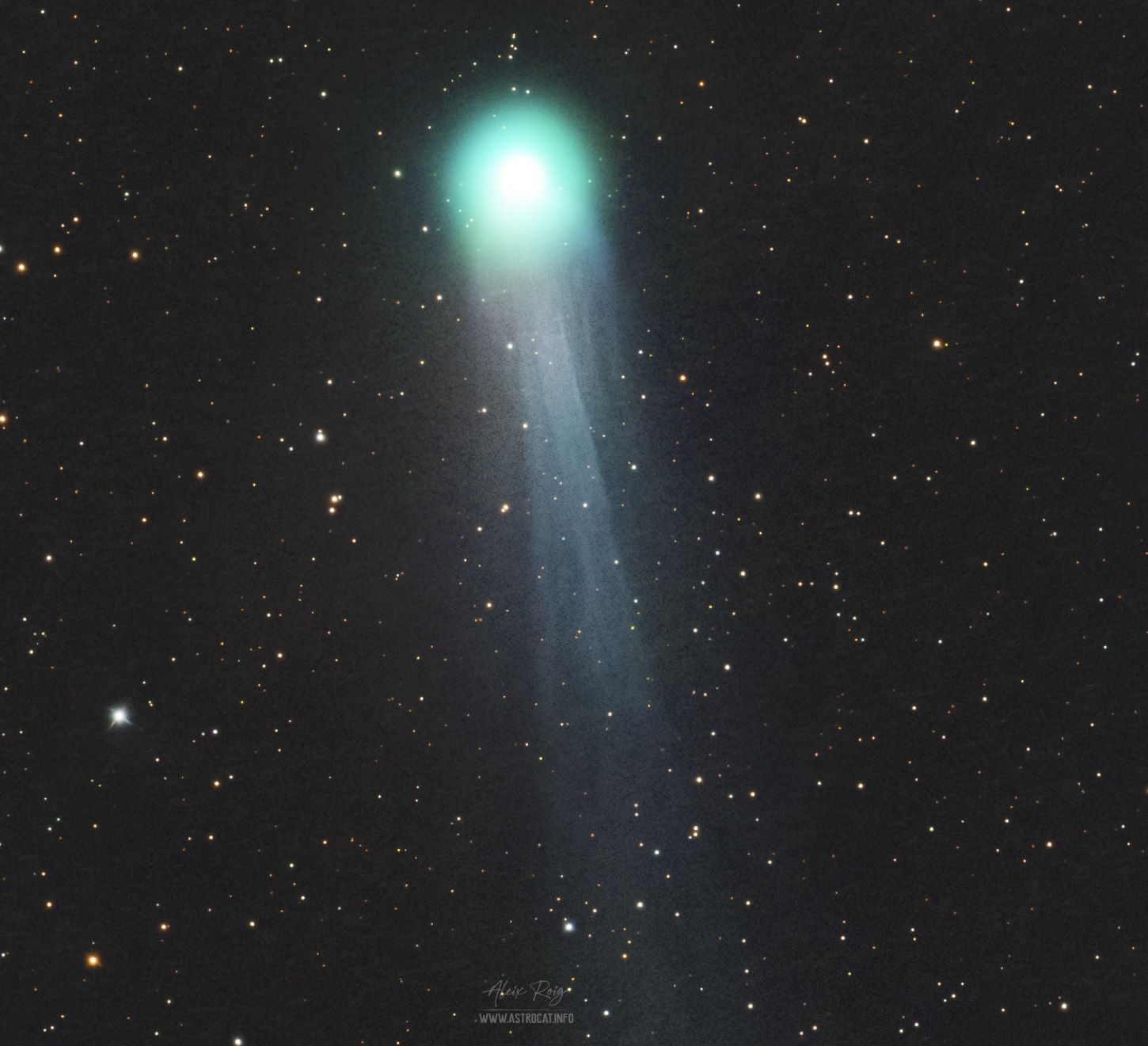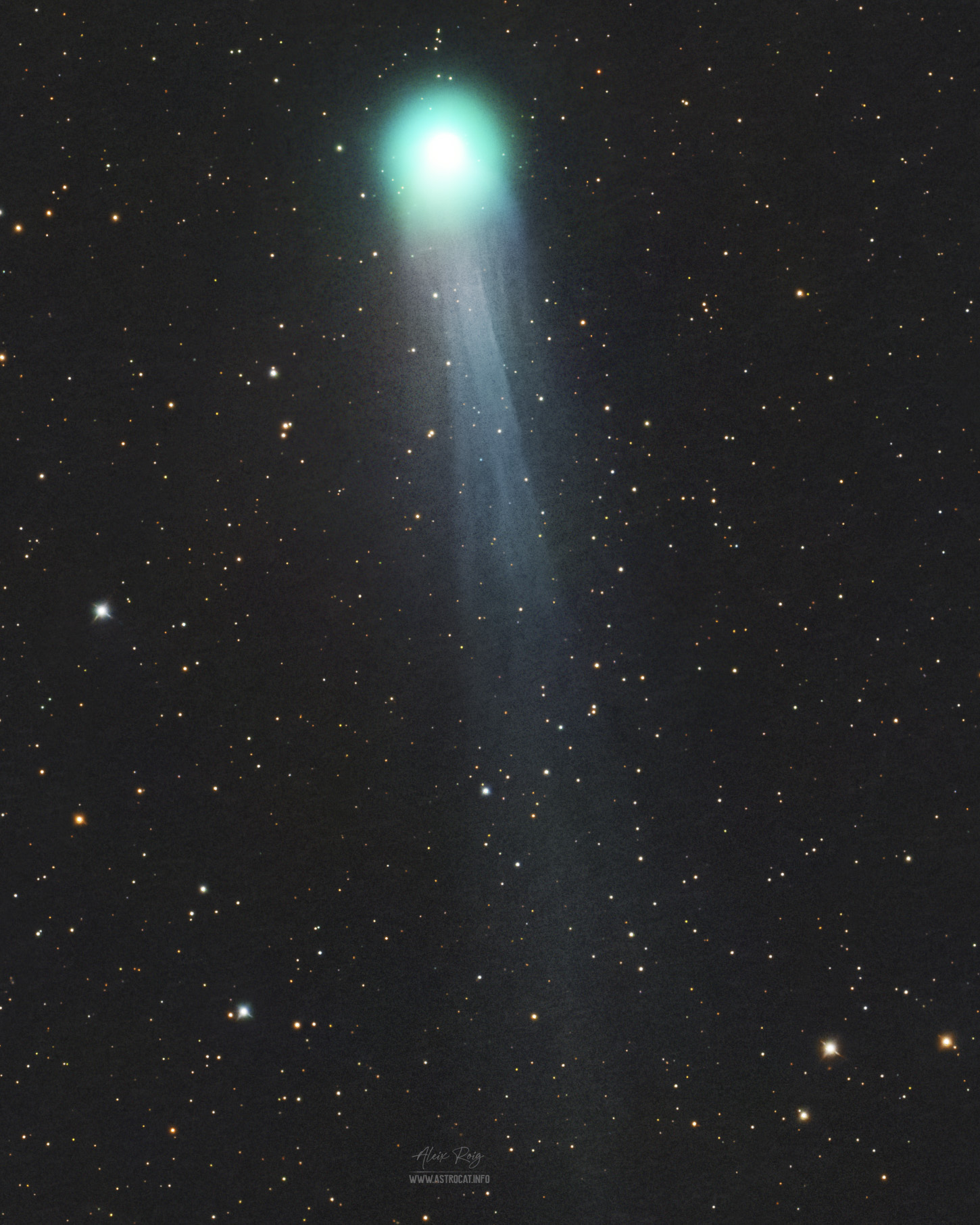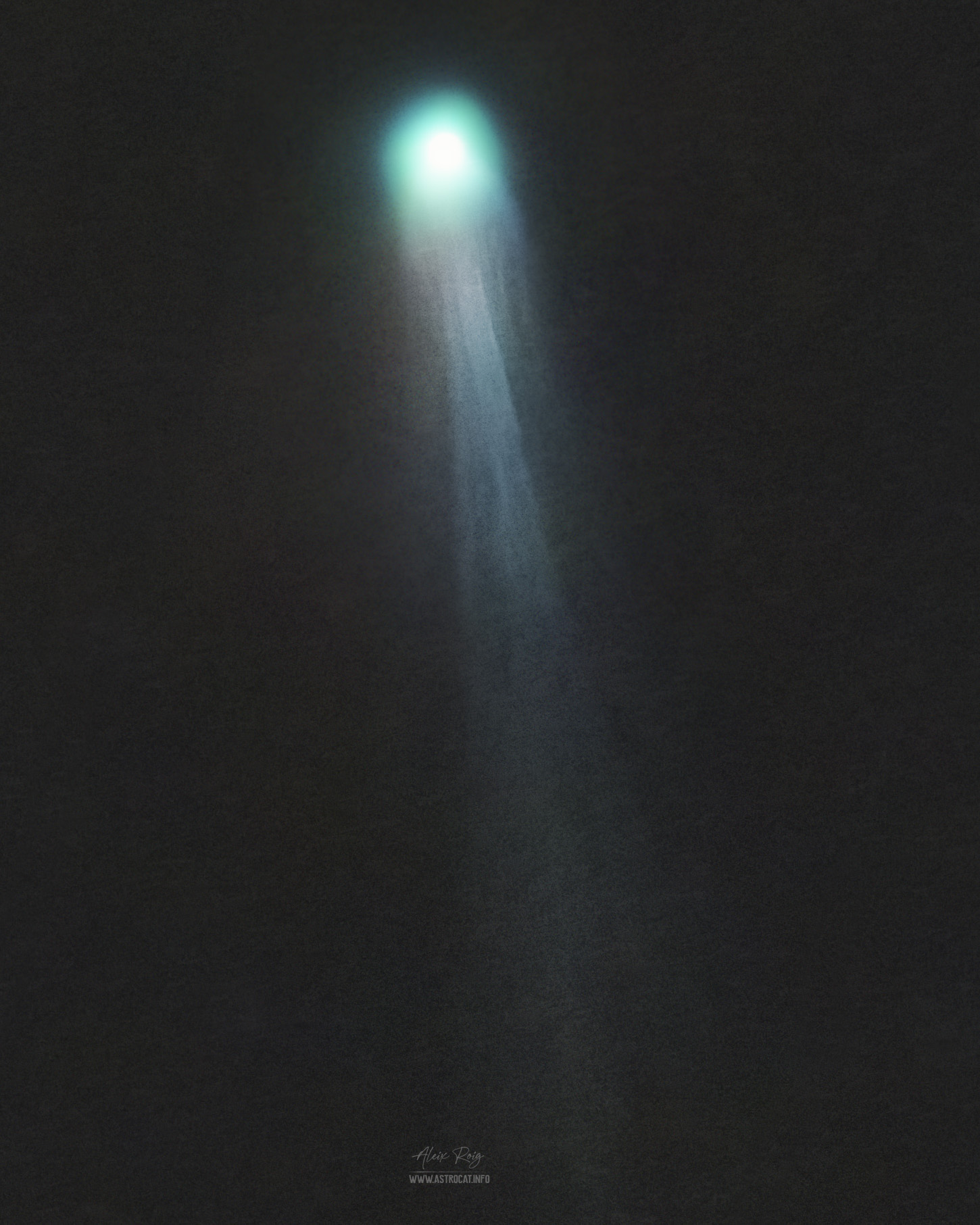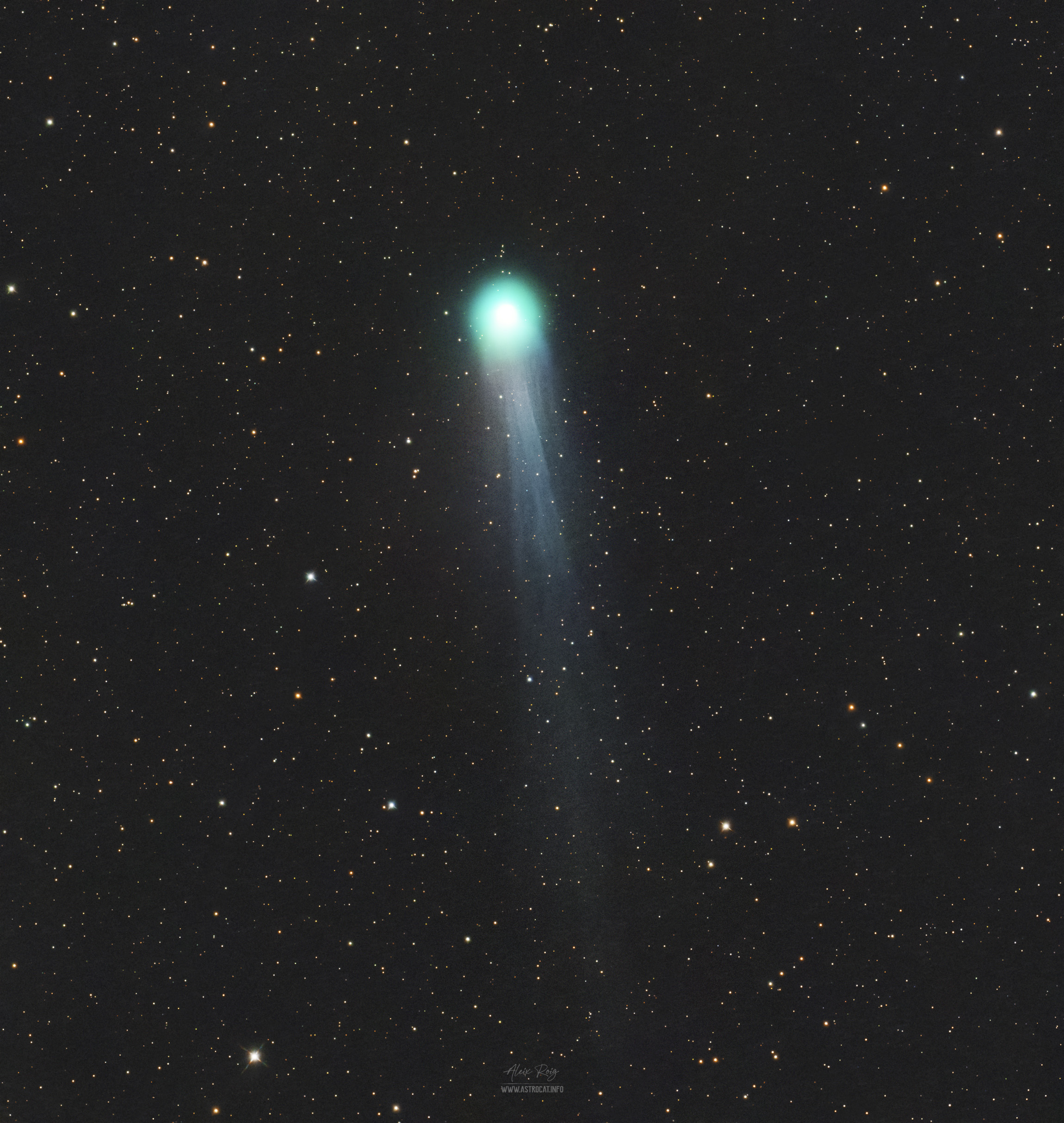As the Comet 12P/Pons-Brooks is approaching to its perihelion, that will be achieved the next 21st of April 2024, it’s now crossing the Andromeda constellation. The closest approach to Earth will take place a bit later, on the 2nd of June 2024, at a distance of 1.55 AU.
This periodic comet has an orbital period of 71 years, and it fits the classical definition of a Halley-type comet, with an orbital period between 20 and 200 years. This comet was independently discovered by astronomers Jean-Louis Pons and William Robert Brooks. Pons, a French astronomer, first observed the comet on July 12, 1812, while Brooks, an American astronomer, rediscovered it on July 7, 1883. The comet has been observed during multiple apparitions since its discovery.
The night of the 1st of March 2024 I captured an image of it during the first minutes after the sunset. I used my new setup specially designed for comet hunting. It consists of a fast newtonian telescope, the Sharpstar 13028HNT (it works at a focal ratio of 2.8) matched with a new ASI2600MC camera.
The full image covers an area of 1º38′ x 1º43′ at a resolution of 2.13″/pixel.
Thanks for your time on this website.
Image Details
Lights: 10 x 120″ (20′) 19:00UTC
Calibrated with darks, flats, dark-flats.
Total exposure: 20′
Average Moon phase at 67% (not visible during the captures)
Image resolution: 2.13”/pixel
FOV (full image): 1º38′ x 1º43′
Equipment
Sharpstar 13028HNT + ASI2600MC + L-Quad + ZWO EFW 5pos + ZWO EAF
ZWO AM5 mount
ASI AIR Plus
Guiding with ASI120MM and ZWO Mini Guide Scope
Software
ASI Air software, APP (for the comet stacking), PIX, TPZ, LR, PS.
Aleix Roig, March 2024
Prades (Tarragona, Catalonia – Spain).





